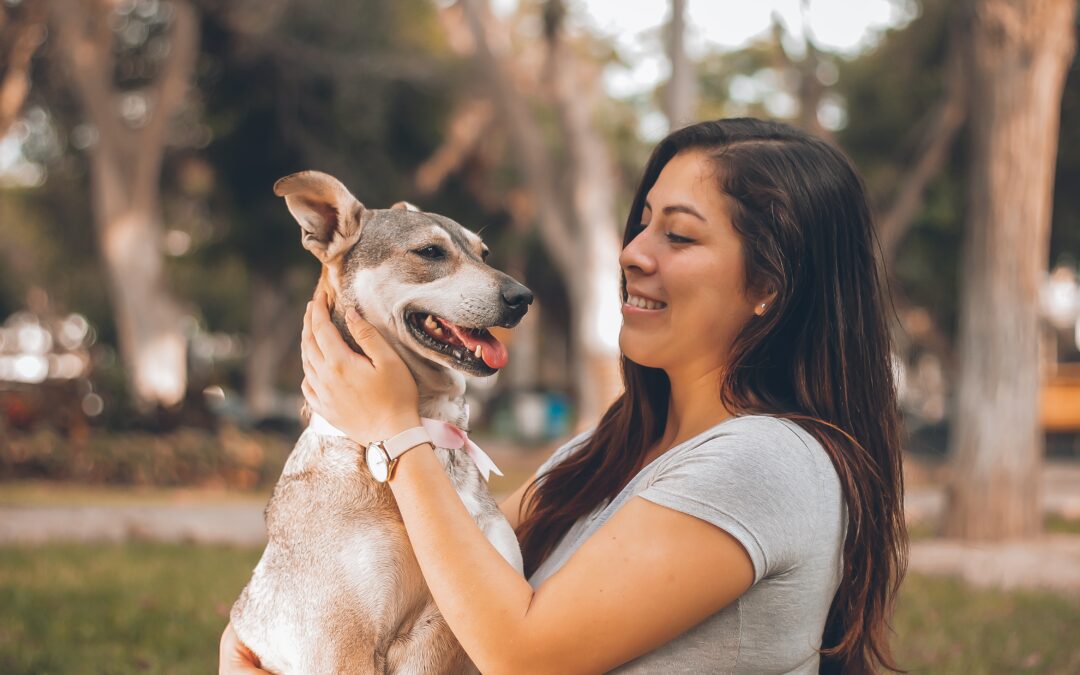Many dog owners believe that their rescued pets feel grateful to them for providing them with a loving home, but is this really the case?
As much as we would like to think that our furry friends understand the depth of our actions, it’s important to understand the science behind dog behavior and emotions before jumping to conclusions.
In this article, we’ll delve deeper into the topic of rescued dogs and analyze whether they truly recognize their owners as their saviors. So, join us on this journey to unravel the mystery of whether your dog truly knows that you rescued them. And discover what you can do to ensure that they feel safe, secure, and loved in their forever home.
Understanding Dog Behavior and Emotions
Dogs are incredibly social animals and have evolved to communicate with humans and other dogs in a variety of ways. By understanding how dogs express their emotions, we can deepen our bond with them and provide the best possible care.
How Dogs Express Emotions and Gratitude
I think we all know that dogs express their emotions and gratitude primarily through body language, vocalizations, and behavior. A wagging tail, soft eyes, and relaxed body posture can indicate happiness and contentment, while growling, barking, and stiff body posture can signify aggression or fear. Dogs can also show gratitude through their behavior, such as licking their owner’s face, wagging their tail, and cuddling up to them. These actions demonstrate trust, love, and appreciation for their owner.
The Importance of Body Language and Tone of Voice in Dog Communication
Dogs rely heavily on our body language and tone of voice to understand what’s going on. They are extremely sensitive to changes in how we act and can easily pick up on subtle cues. For example, a tense body posture, a furrowed brow, or a sudden movement can trigger fear or aggression in a dog. Not just that, but our tone of voice can also affect a dog’s emotional state. Using a high-pitched, soothing tone can help to calm a dog down, while a harsh tone can cause anxiety and fear.
The Science behind Dog Memory
Dogs are known for their incredible ability to remember people, places, and events. But how exactly does dog memory work, and how does it impact their emotions and behavior?
Overview of Dog Memory and Its Duration
Dogs have a remarkable memory span, which can last for several years, depending on the circumstances. While it is difficult to determine the exact duration of a dog’s memory, studies have shown that they can remember past events and experiences for a long time. This ability to retain information is due to the size of their brain and the structure of their hippocampus, the part of the brain responsible for memory.
How Dogs Process and Store Memories
Dogs process and store memories in much the same way as humans. When a dog experiences something new, the information is stored in their short-term memory. If the event is significant or emotionally charged, it is then transferred to their long-term memory, where it can be accessed later. This is why dogs may remember traumatic events, such as abuse or neglect, for a long time, even if they occur in the distant past.
The Relationship between Memory and Emotions in Dogs
Memory and emotions are closely linked in dogs. A dog’s emotional state can influence the way they remember events and experiences. For example, if a dog experiences something traumatic, such as being hit by a car, the memory of that event can trigger feelings of fear or anxiety whenever they encounter a similar situation. This is why it’s important to create positive associations for a rescued dog, such as providing them with a loving and secure environment, to help them overcome any negative past experiences.
Rescuing Dogs: What Goes Through Their Minds?
Rescuing a dog can be a life-changing experience for both the animal and their new owner. Which is why it’s really important to understand what a rescued dog goes through and the emotions they may experience during this transition period.

Photo by Eduardo Arcos on Unsplash
What Does a Dog Go Through When It’s Rescued
When a dog is rescued, they may experience a range of emotions, including fear, confusion, and anxiety. They may be scared of their new surroundings, unsure of who their new owner is, and may not understand what is expected of them, struggling as they adjust to their new environment. They may also have experienced trauma in their past, which can make settling into a new environment even more challenging.
A dog crying at night in a new home is not unusual, and during this time, they may exhibit behaviors such as hiding, shaking, or avoiding their new owner, but no matter what, it’s important to be patient and understanding during this time, as the dog needs time to acclimate to their new surroundings.
How Long It Takes a Rescued Dog to Adjust to a New Environment
The amount of time it takes for a rescued dog to adjust to their new environment can vary depending on the individual dog and their past experiences. Some dogs may take a few days to adjust, while others may take several months. What’s important now is to provide a safe and loving environment, and give them the time and patience they need to adjust, so that we can help our furry friends feel secure and happy in their new home.
Does Your Dog Recognize You as the Rescuer?
I think it’s no surprise that many people wonder if their rescued dog recognizes them as the person who saved them. I mean, it would be pretty awesome for someone to regard you as a hero right? Anyways, while dogs may not understand the concept of rescue, they can certainly recognize their owners in a variety of ways.
How Do Dogs Recognize Their Owners
Dogs use their senses, particularly their sense of smell, to recognize their owners. They can recognize you by your scent, voice, and appearance, and don’t be surprised if they may also recognize your walking pattern and body language. Dogs have a strong sense of familiarity, and they form an emotional connection with their owner over time.
How Do Dogs Respond to Their Owners’ Presence
Dogs respond to their owner’s presence in a variety of ways. They may wag their tail, jump up, or bark in excitement, or they may also show affection by licking their owner’s face or cuddling up to them. When separated from their owner, dogs may become anxious or distressed, indicating a strong bond.
The Impact of Bonding and Attachment on a Dog’s Recognition of Its Owner
Bonding and attachment play a significant role in a dog’s recognition of their owner. Although a rescued dog may take longer to recognize their new owner if they have experienced trauma in the past, with patience and love, it can still form a strong bond with you, their new owner, and begin to recognize you as a source of safety and security.
In Conclusion: Does My Dog Know I Rescued Him?
The bottom line is, while dogs may not understand the concept of rescue, they definitely have the ability to recognize their owners through their senses and emotional connection.
Now that you have a better understanding of dog behavior and emotions, I’m sure you will continue providing a safe and loving environment and help our rescued dogs feel secure and happy in their forever home. Watch as they become a loyal and grateful companion for life!
Learn more about us
Subscribe to the DAR Newsletter below:
About the author


